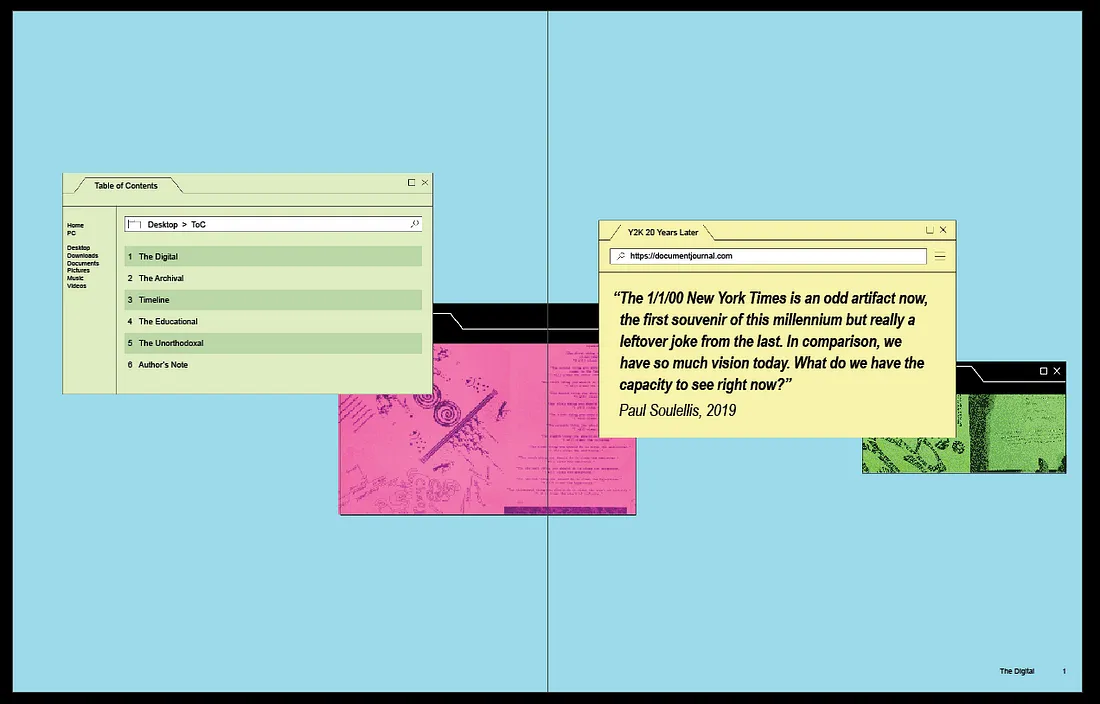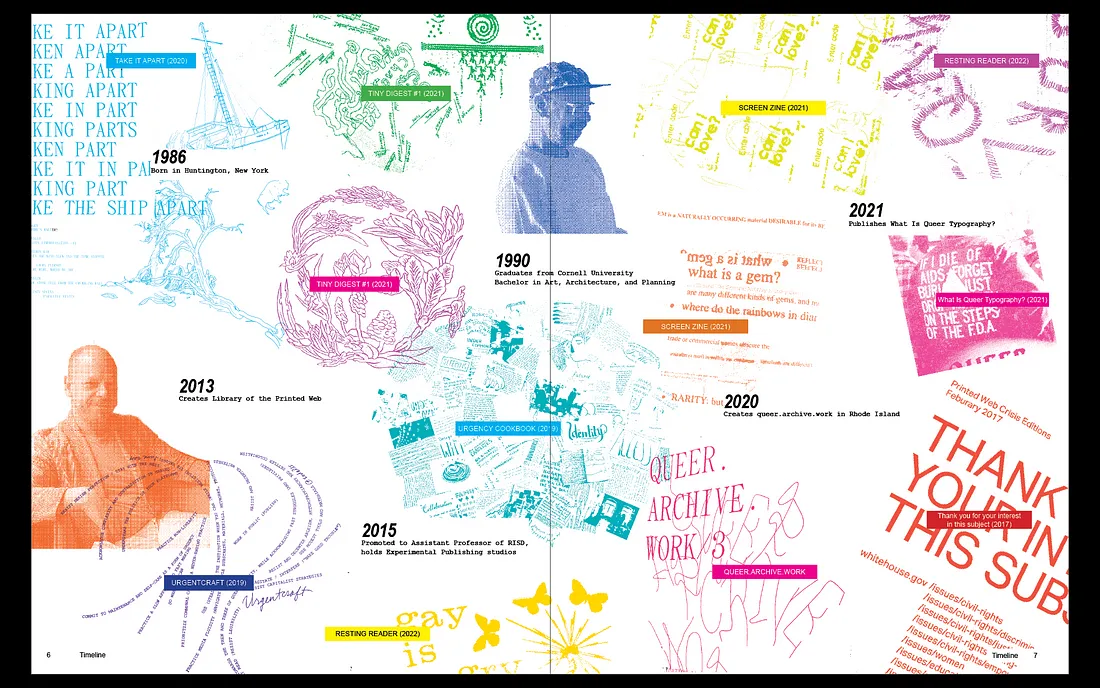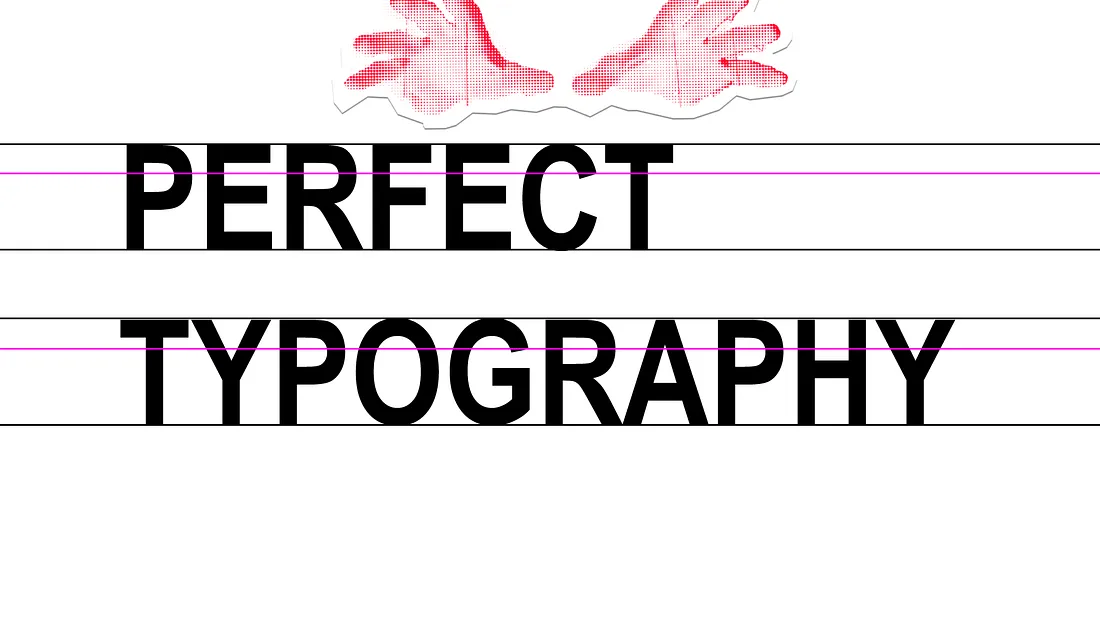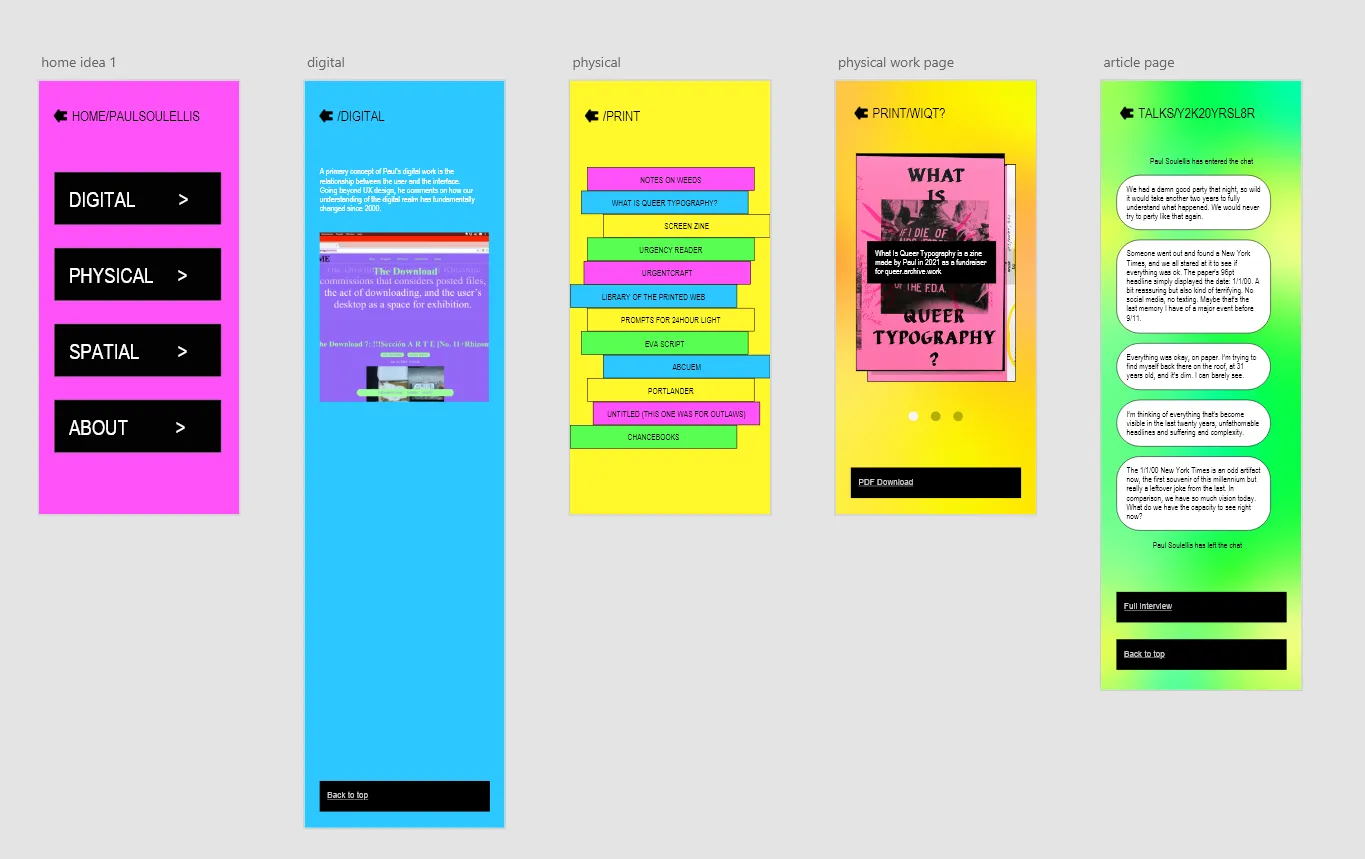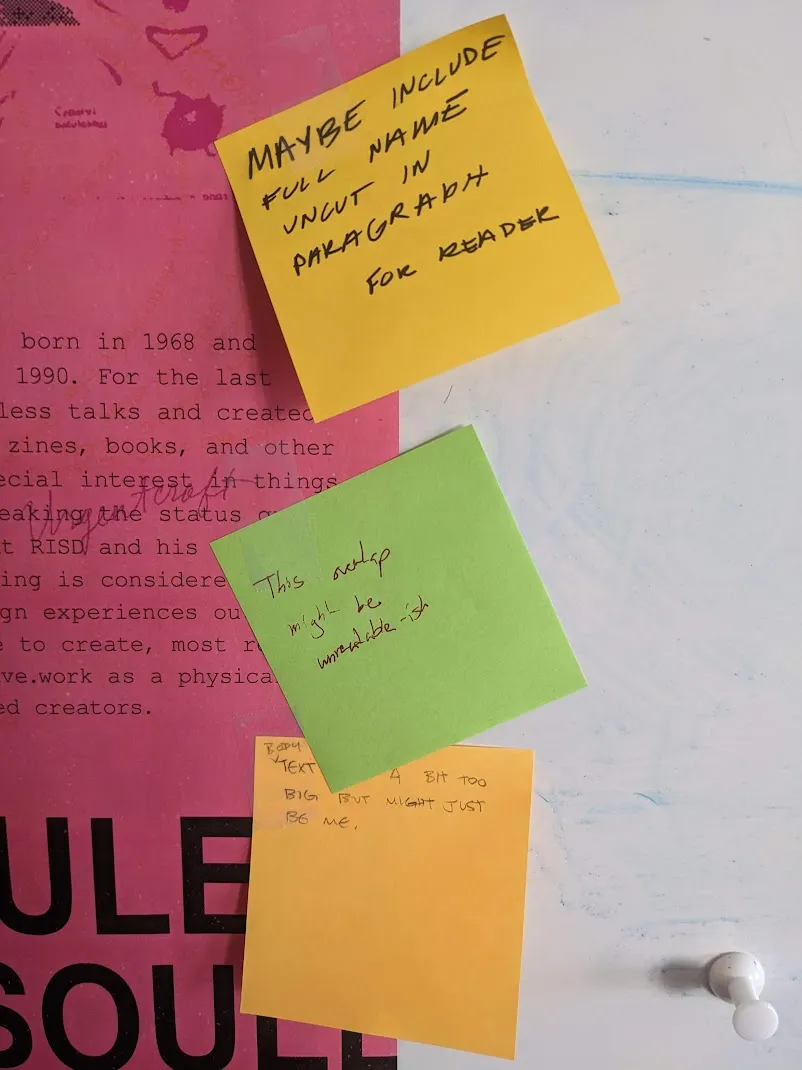my design hero: paul soulellis
What is queer typography? How do we archive the ephemeral? How do we teach design? This is an exploration of these questions and other philosophies from RISD professor Paul Soulellis across physical and digital media.
TIME: january - may 2023
ROLE: systems, print, motion, ui/ux
TOOLS: adobe suite, html/css
project brief
Tasked with finding a designer in the world to create multiple projects on over the course of 14 weeks, i googled things i would relate to. "queer typography" was my most successful query, linking me directly to none other than Paul Soulellis, a designer and professor at RISD.

To capture his style I had to break all the rules I had just learned. Paul talked a lot about the riso, about queer acts of designing, about urgency and community, about archiving practices, about things new and exciting to me. His work is chaotic, almost overwhelming to look at, impossible to see every detail in one glance. This is what I aimed to replicate in my initial poster of him.
Moving on to a booklet about his work, I was set on portraying his digital archiving work in a physical medium. His catalog of work isn't all that long, so I focused on key projects like Library of the Printed Web and Queer.Archive.Work. Translating the chaotic qualities of a poster into spreads that vary from page to page was a Task, resulting in a wonderful mess of a booklet.

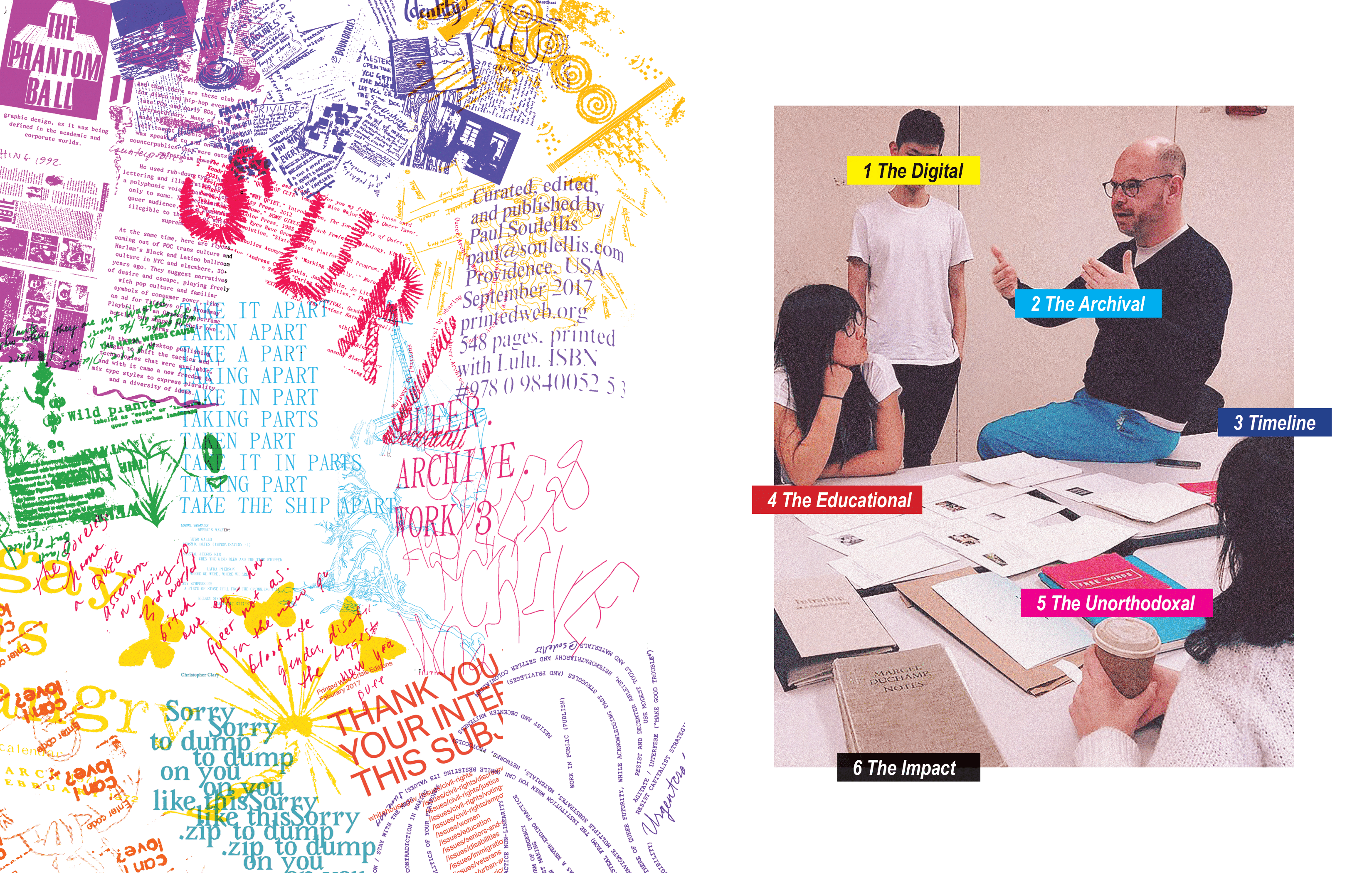
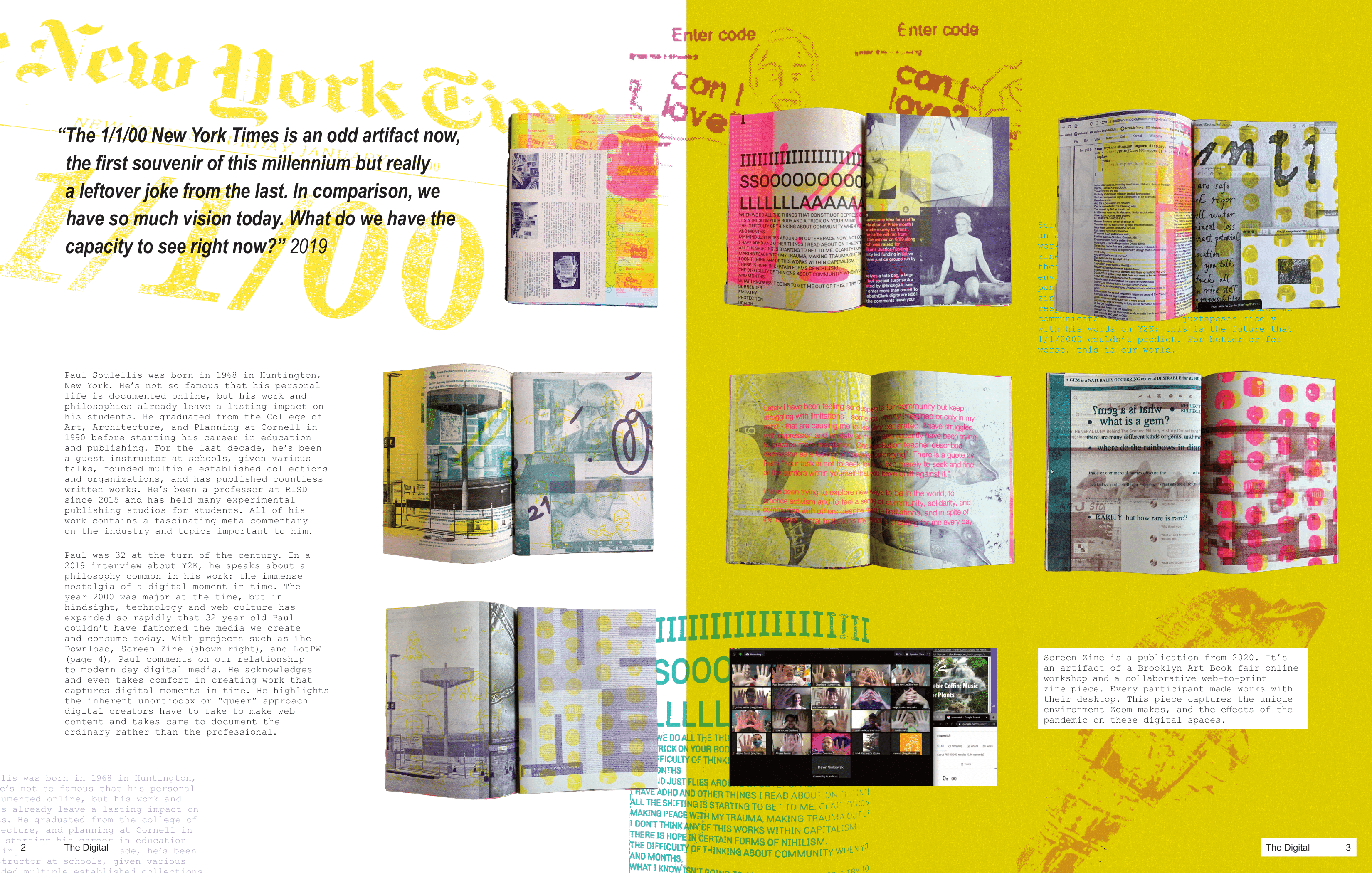
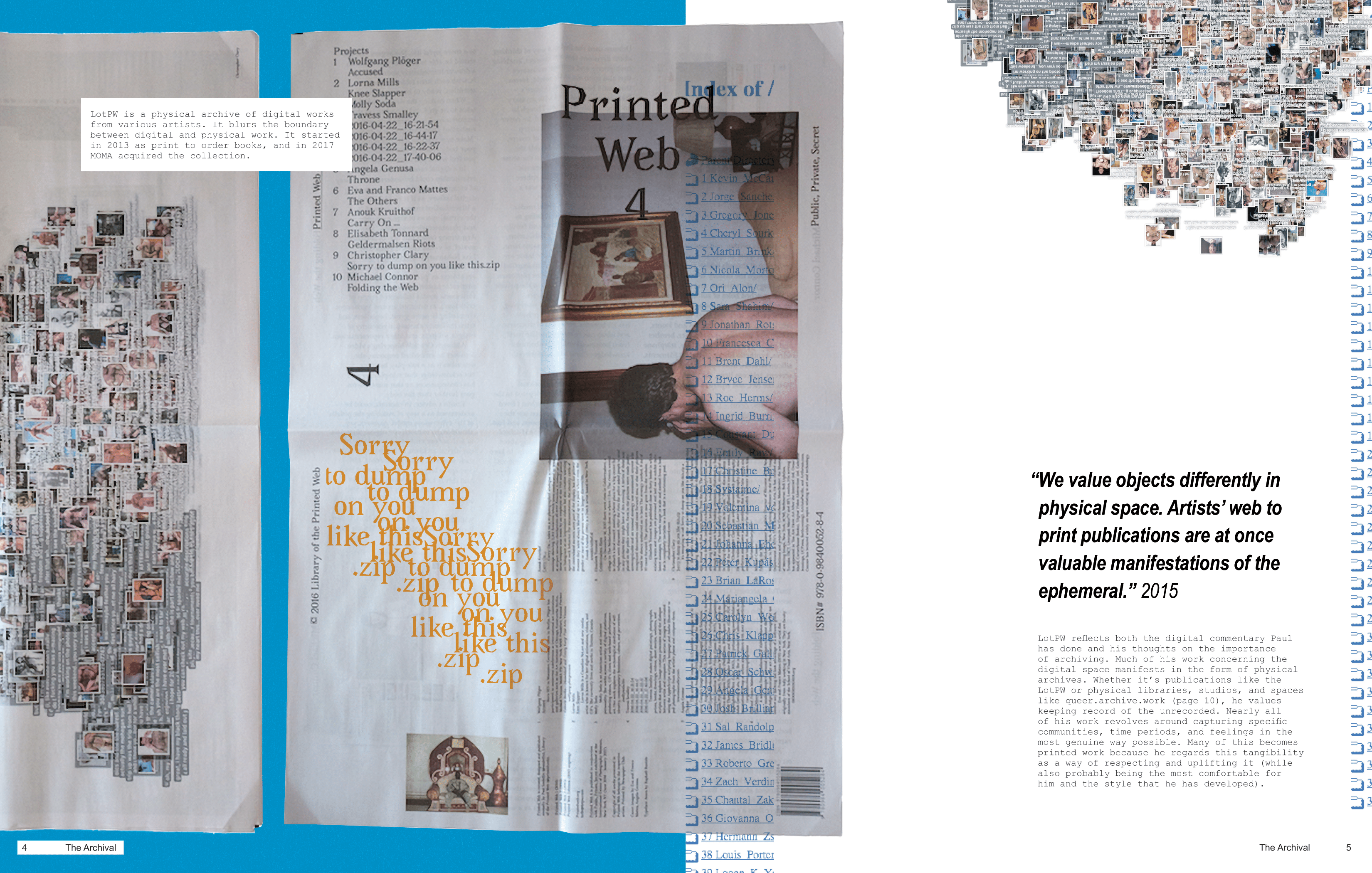
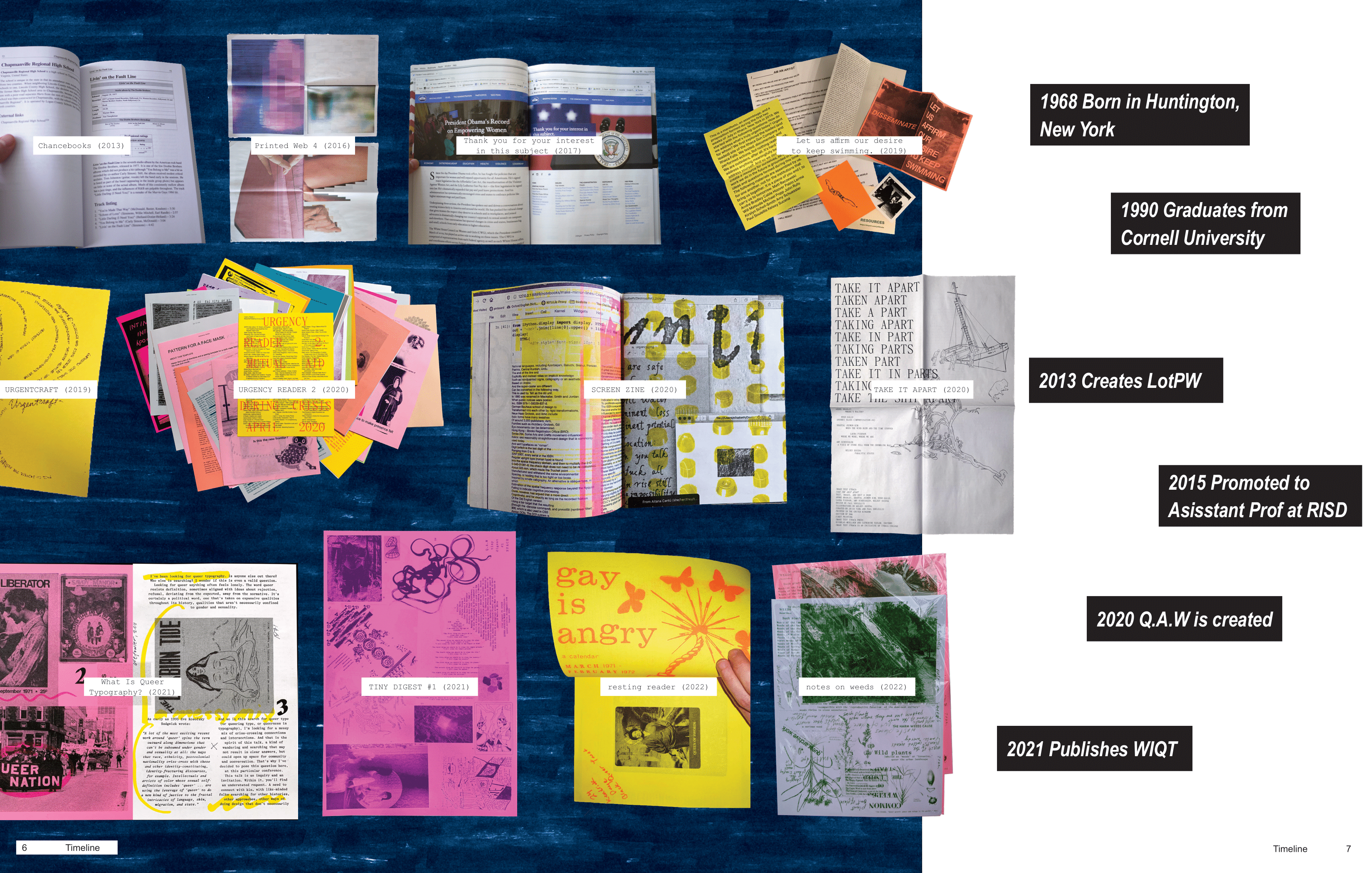


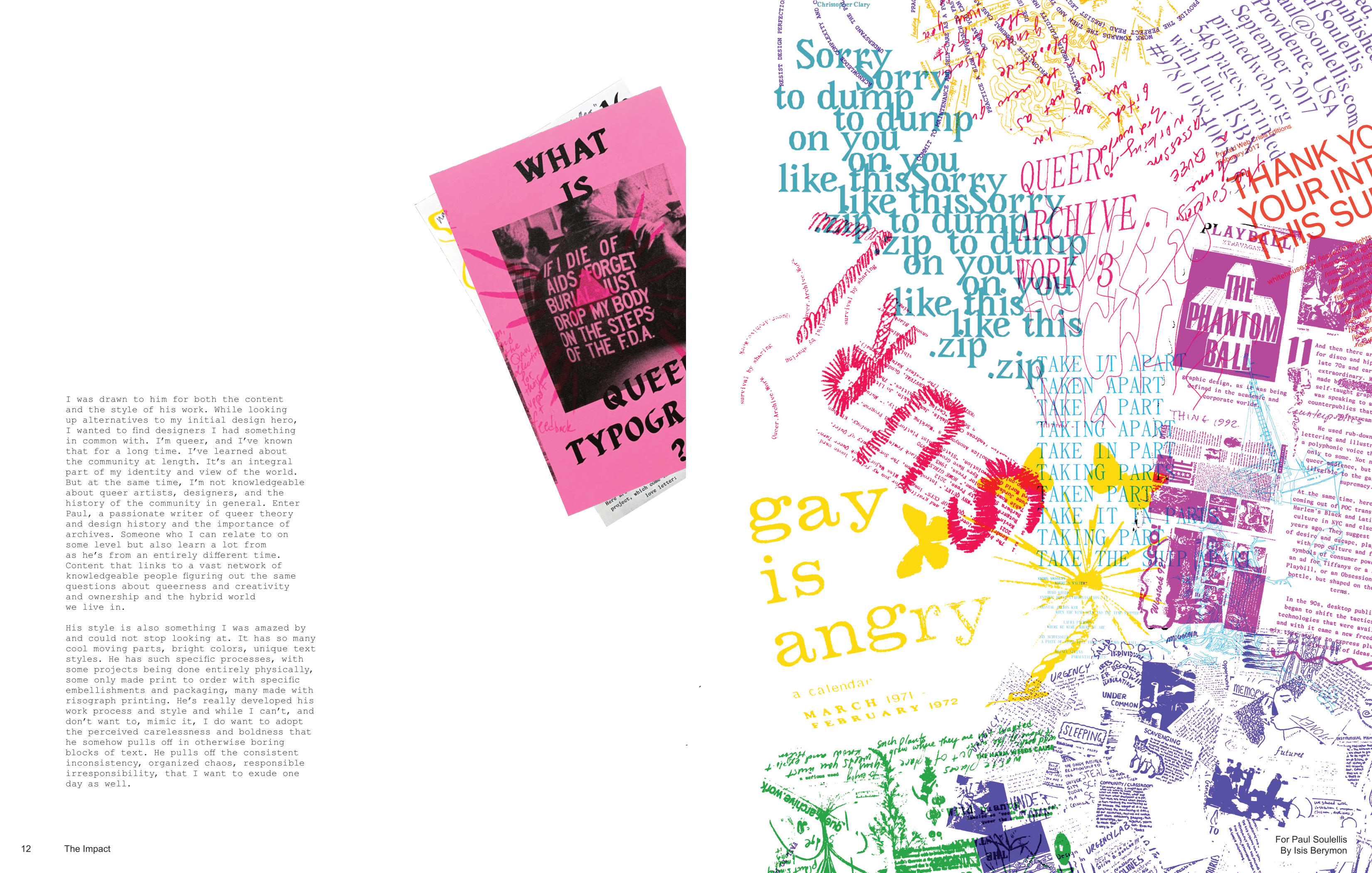
Turning to a temporal medium, I focused on a talk of his and the reason I found him - What is Queer Typography? This talk explores what typography is historically and how it may interact with our understanding of queerness. Does queer type exist? Or is it more of a mode of design, a way of being and doing that inevitably applies to everything a designer does? This exploration interested me.
The video itself leans into kitschy, camp understandings of design and aesthetics. While the topic is abstract, the visuals are concrete representations of Paul's words. What is it like to be a queer designer? What do I know about the history of my queer community? What resonates with my queer peers? These are the questions I asked myself as I animated.
For my final piece of the project, I made a mobile experience that taps into a specific quality of Paul's work: voyuerism. To me, the act of archiving something so temporary like the web feels voyueristic in nature. A snapshot of a webpage lost to time is not dissimilar to being unknowingly watched. It's nosy. So I made an app that forces you to engage in these voyueristic tendencies.
It's set as a messenging app, supposedly with Paul himself talking about his work and history. You aren't supposed to be there, and now you have unlimited access to all his work, for better or for worse. Will you snoop around? Do you trust the links? Are you using the internet responsibly? This work is the most removed from my initial understanding of Paul Soulellis, instead a result of working in his aesthetic for multiple months and thinking about my relation to his work as a stranger.

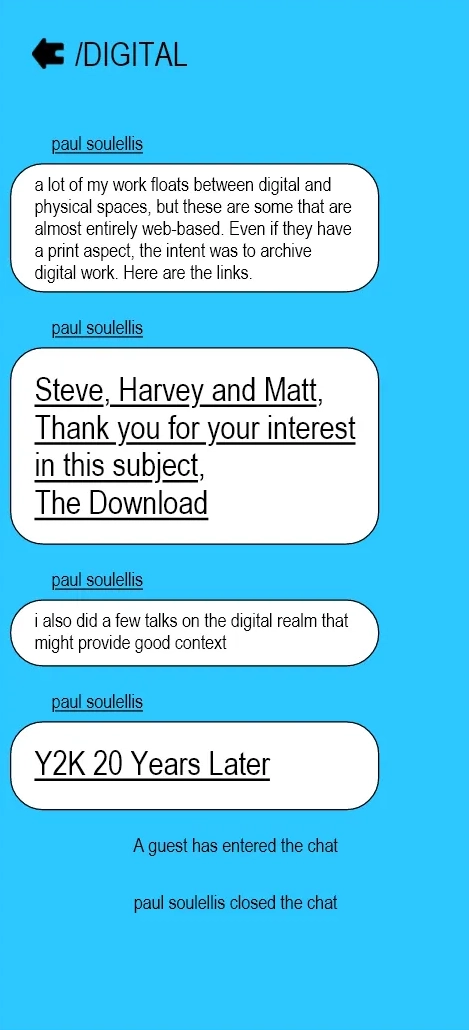
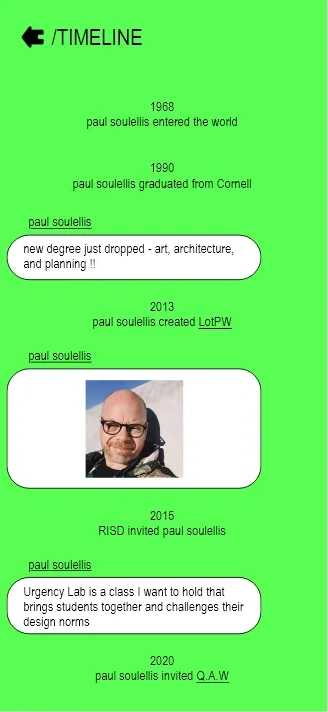
process photos
View my poster, booklet, video, and app process here.
